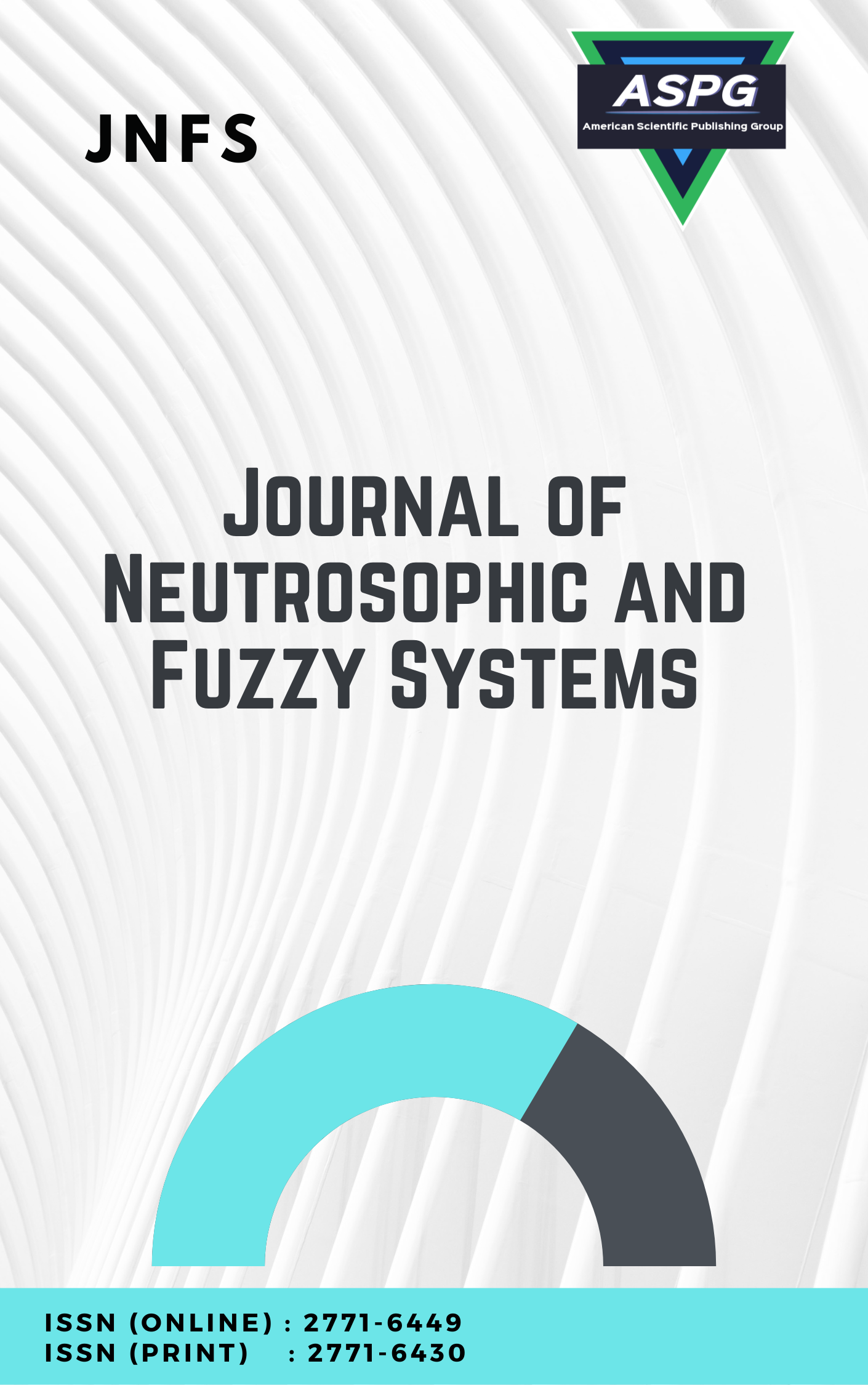

The ring of weak fuzzy complex numbers is an extension of real numbers ring by using an algebraic element with fuzzy property. In this paper, we present two novel generalizations of weak fuzzy complex numbers, where the concepts of strong fuzzy complex numbers and split-complex weak fuzzy complex numbers will be defined for the first time with a general study of their elementary properties and special elements. On the other hand, we provide an algorithm to compute the dempotent elements in the ring of split-complex weak fuzzy complex numbers with many related examples that clarify the validity of our work.
Read MoreDoi: https://doi.org/10.54216/JNFS.080201
Vol. 8 Issue. 2 PP. 08-14, (2024)
This paper is dedicated to studying for the first time the concept of weak fuzzy complex integers division and units, where we present a full classification of weak fuzzy complex integer units with necessary and sufficient conditions for division in the set of weak fuzzy complex integers. On the other hand, we provide an algorithm for solving weak fuzzy complex linear congruencies with many related examples that explain how algorithms work.
Read MoreDoi: https://doi.org/10.54216/JNFS.080202
Vol. 8 Issue. 2 PP. 15-22, (2024)
This paper uses some logical algebraic elements to extend any ring into a non-commutative ring containing the original ring with many generalized substructures and special elements. On the other hand, we study the substructures of non-commutative logical rings such as AH-homomorphisms and AH-ideals with many examples that explain their algebraic validity. Also, we discuss the possibility of solving a linear Diophantine equation with two variables in the non-commutative logical ring of integers, where we present an easy algorithm to solve this kind of generalized Diophantine equation.
Read MoreDoi: https://doi.org/10.54216/JNFS.080203
Vol. 8 Issue. 2 PP. 23-30, (2024)
This research aims to modify the Picard iteration method by hybridizing it with some orthogonal polynomials and then applying the hybrid method in solving neutrosophic nonlinear elementary value problems. This method is based on modifying the Picard iteration method by approximating the right-hand side of the neutrosophic differential equation of the studied problem either by Legendre polynomials or by Chebyshev polynomials of the first kind to obtain two different hybrids of the Picard iteration method. Also, we apply this modification to neutrosophic elementary value problems represented by neutrosophic nonlinear and right-handed nonlinear differential equations to demonstrate the reliability and efficiency of the proposed modified method. For this goal, we prove how effective this method is, we calculate the neutrosophic absolute error of approximate solutions resulting from the application of the proposed modification of the Picard iteration method and with the exact solution.
Read MoreDoi: https://doi.org/10.54216/JNFS.080204
Vol. 8 Issue. 2 PP. 31-37, (2024)
The ring of n-cyclic refined neutrosophic integers is a logical extension of the integer ring Z based on a special multiplication operation defined between the indeterminacy algebraic elements. In this paper, we provide a full description of the 4-cyclic refined neutrosophic integer roots of unity, where we prove that for odd values of n we get exactly two different solutions. For even values of n, we get exactly 15 different solutions. On the other hand, we characterize the m-cyclic refined neutrosophic modulo integers rings and present many of their algebraic properties based on neutrosophic homomorphisms and substructures.
Read MoreDoi: https://doi.org/10.54216/JNFS.080205
Vol. 8 Issue. 2 PP. 38-48, (2024)
In this paper we represent many classifications of neutrosophic and plithogenic Markov Chains states including absorbent states, inessential and essential states, recurrent states and communicated states. We prove that if a state (i) according to a neutrosophic Markov Chain with neutrosophic transition matrix is classified as any of the previous classifications then it is also classified as the same classification in classical scene to two Markov Chains defined with transition matrices respectively. Also, we prove that if a state (i) according to a plithogenic Markov Chain with plithogenic transition matrix is classified as any of the previous classifications then it is also classified as the same classification in classical scene to three Markov Chains defined with transition matrices respectively. Many theorems and solved examples are presented and solved successfully.
Read MoreDoi: https://doi.org/10.54216/JNFS.080206
Vol. 8 Issue. 2 PP. 49-61, (2024)